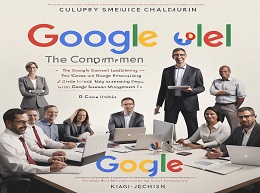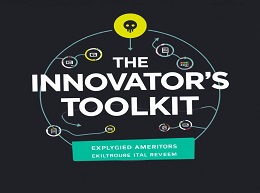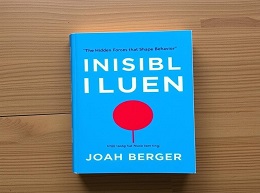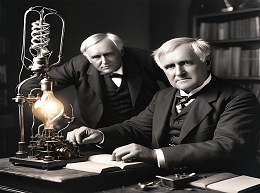Disciplined Dreaming: A Proven System to Drive Breakthrough Creativity

Disciplined Dreaming: A Comprehensive Review
In "Disciplined Dreaming: A Proven System to Drive Breakthrough Creativity," author and creativity expert Josh Linkner presents a structured approach to fostering creativity in both personal and professional settings. Linkner, a renowned entrepreneur and jazz musician, combines his extensive experience in business and the arts to offer a compelling guide that promises to unlock creative potential and drive innovation. This review explores the key concepts, strategies, and examples from the book to provide a thorough understanding of how "Disciplined Dreaming" can transform your creative processes.
The Need for Creativity in Today's World
Linkner opens with a compelling argument for the necessity of creativity in today's rapidly changing world. He posits that creativity is not a luxury but a crucial skill for success in the 21st century. Whether in business, education, or personal development, the ability to innovate and think creatively sets individuals and organizations apart. Linkner emphasizes that creativity can be cultivated and harnessed through a disciplined approach, dispelling the myth that it is an innate talent reserved for a select few.
The Five-Step Process of Disciplined Dreaming
Linkner introduces his five-step process, which serves as the backbone of "Disciplined Dreaming." Each step is designed to guide readers through a structured approach to creativity, making it accessible and actionable.
1. Ask : Formulating the right questions.
2. Prepare : Laying the groundwork for creative thinking.
3. Discover : Uncovering new ideas and possibilities.
4. Ignite : Turning ideas into actionable plans.
5. Launch : Implementing and scaling creative solutions.
Step 1: Ask – The Power of the Right Questions
The first step in the Disciplined Dreaming process involves asking the right questions. Linkner argues that creativity begins with curiosity and the willingness to challenge assumptions. By asking provocative and open-ended questions, individuals and teams can break free from conventional thinking patterns.
Example: The Power of "What If?"
Linkner illustrates this concept with the example of the "What If?" question. He recounts how companies like Apple and Google use this simple yet powerful question to explore new possibilities and drive innovation. For instance, Apple's development of the iPhone began with the question, "What if we could combine a phone, an iPod, and an internet communicator?" This question led to a groundbreaking product that revolutionized the tech industry.
Step 2: Prepare – Setting the Stage for Creativity
Preparation is crucial for fostering a creative environment. Linkner highlights the importance of creating a conducive physical and mental space for creative thinking. This includes eliminating distractions, fostering a positive mindset, and building a diverse team with varied perspectives.
Example: Pixar's Braintrust
Linkner points to Pixar's Braintrust as an example of effective preparation for creativity. Pixar’s Braintrust consists of a group of directors and storytellers who provide candid feedback on each other’s projects. This environment of trust and constructive criticism helps filmmakers refine their ideas and produce high-quality films.
Step 3: Discover – Uncovering New Ideas
In the discovery phase, Linkner emphasizes the importance of divergent thinking—generating a wide range of ideas without immediate judgment. This phase encourages free-flowing creativity and the exploration of multiple possibilities.
Example: Brainstorming Techniques
Linkner describes various brainstorming techniques to facilitate discovery, such as mind mapping, role-playing, and the SCAMPER method (Substitute, Combine, Adapt, Modify, Put to another use, Eliminate, and Reverse). He shares a story about how a tech startup used the SCAMPER method to innovate its product line, leading to the creation of a new, market-leading software application.
Step 4: Ignite – Turning Ideas into Actionable Plans
Ignition is about transforming raw ideas into feasible plans. Linkner stresses the need for evaluation, refinement, and strategic planning to bring creative concepts to life. This phase involves critical thinking and practical assessment to identify the most promising ideas.
Example: Prototyping and Iteration
Linkner uses the example of IDEO, a global design and innovation firm known for its prototyping and iteration process. IDEO encourages rapid prototyping and frequent testing to refine ideas continuously. This approach has led to successful products like the Apple mouse and the first laptop computer.
Step 5: Launch – Implementing and Scaling Creative Solutions
The final step is launching and scaling the creative solutions developed in the previous phases. This involves execution, feedback loops, and continuous improvement to ensure the ideas are effectively implemented and can grow over time.
Example: Starbucks' Transformation
Linkner discusses how Starbucks implemented creative solutions to transform its business model. By rethinking the customer experience and incorporating innovative ideas like the Starbucks Reserve Roastery, the company revitalized its brand and expanded its market presence globally.
Overcoming Barriers to Creativity
Linkner addresses common barriers to creativity, such as fear of failure, complacency, and rigid organizational structures. He provides practical strategies to overcome these obstacles, including fostering a culture of experimentation, encouraging risk-taking, and promoting a growth mindset.
Example: 3M’s 15% Rule
One notable example is 3M’s 15% Rule, which allows employees to spend 15% of their work time on projects of their own choosing. This policy has led to numerous innovations, including the development of the Post-it Note. By giving employees the freedom to explore their ideas, 3M has maintained a steady stream of creative products.
Practical Applications and Real-World Impact
Linkner’s methodology is not just theoretical; it has real-world applications across various industries. He shares numerous success stories from companies that have applied the Disciplined Dreaming process to achieve significant breakthroughs.
Example: Ford’s Innovation Journey
Ford Motor Company used the principles of Disciplined Dreaming to drive innovation in its product development process. By fostering a culture of creativity and encouraging cross-functional collaboration, Ford was able to introduce innovative features in its vehicles, such as the SYNC infotainment system.
Example: Non-Profit Sector
The book also highlights the application of creative principles in the non-profit sector. Organizations like Teach for America and the Red Cross have used creative problem-solving techniques to address complex social issues and improve their impact.
The Future of Creativity
"Disciplined Dreaming" provides a comprehensive and actionable framework for cultivating creativity. Josh Linkner’s approach demystifies the creative process and makes it accessible to individuals and organizations alike. By following the five-step process, anyone can harness the power of creativity to drive innovation and achieve breakthrough results.













